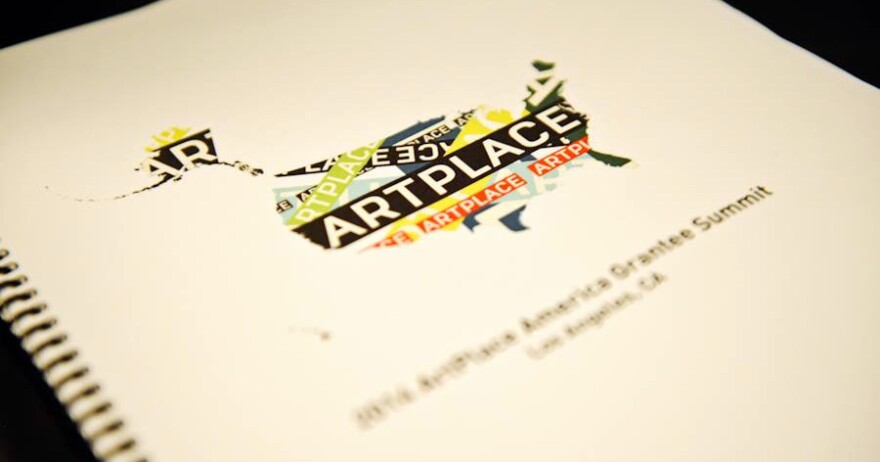Flanked by poster board renderings and city officials, urban planners and arts nonprofits gathered in City Hall Wednesday to announce that two Austin community art projects will receive federal and private funding from the organization ArtPlace America totaling $656,500.
Austin Mayor Pro Tem Sheryl Cole said that Austin, whose population has increased by nearly 70 percent since 1990, is being looked at by the rest of the nation as a hub for artists and art-making.
“All eyes are on Austin for a lot of reasons, but one of the reasons that we have to be very proud of is our creative class,” said Cole. “The work that the artists are doing to bring such vibrancy and diversity to our city – the nation is watching and we are receiving funds for that.”
One of the projects, Drawing Lines, which received $256,500 from ArtPlace, tackles Austin's new City Council district scheme. Drawing Lines will have artists facilitate community artwork in each of Austin’s 10 new council districts, creating works that represents that district.

The second project, called thinkEAST and funded by grants totaling $400,000, will take place over nearly two years as a local nonprofit designs and tests out a performance and exhibition site on a former industrial site in East Austin.
Headed in part by Austin-based design firm GO collaborative, Drawing Lines will start this fall, during the run-up to city council elections. Artists will spend up to a year in their assigned communities getting to know the residents and local businesses.
While GO collaborative has yet to choose the artists, they will all hail from the Austin region – though not necessarily from the district to which they’ll be assigned.
“We’re used to organizing and knowing neighbors at the neighborhood level and then at the city level, and this is the in between,” said Sarah Gamble, an architect with GO collaborative. “This is that district level where neighborhoods are going to have to work together in ways they haven’t in the past: get to know each other and build relationships with a particular council member.”
Brad Carlin, managing director of local nonprofit Fusebox, which will largely head up thinkEAST. The project includes the conversion of 24 acres on the site of the notorious East Austin tank farm, which parked bulk storage tanks full of petroleum and gas in a historically Latino and African-American neighborhood for over 35 years.
After several months of conversations with the community and private developers, in April Carlin says Fusebox will unveil a model “creative community” – a structure that marries affordable housing, an exhibition room and work spaces.
As a neighborhood rapidly undergoing change, Carlin said East Austin needs space available for the needs of residents.



